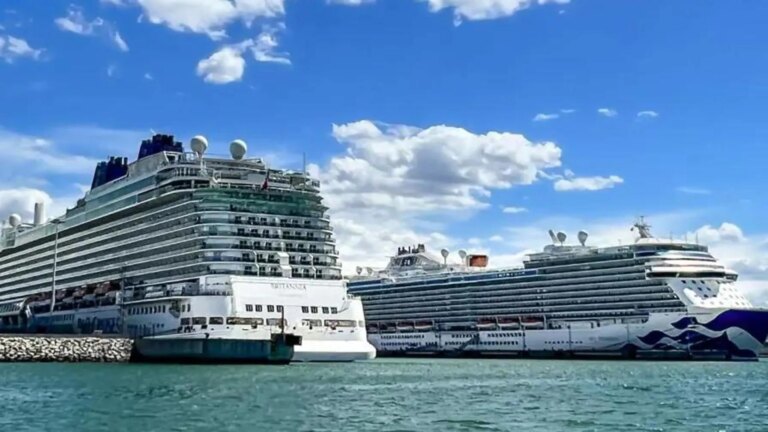Tuesday, July 16, 2024 16:54
Copy link
X (via Twitter)
telegram
thread
Cruise lines have begun rerouting to more “tourist-friendly” destinations following mass anti-tourism protests across Spain.
According to forecasts by the Cruise Lines International Association (CLIA), the cruise industry plans to increase capacity by 10% over the next five years. The association does not believe that Spain’s anti-tourism movement will affect the sales of the cruise industry, but it will affect the destinations that cruise passengers visit. “Tourism phobia is not only a problem in Spain, but also in France and other Mediterranean countries, but tourists are becoming more and more sensitive and the scenes seen in places such as Barcelona are affecting the reputation of destinations,” said Marie-Caroline Laurent, European director of CLIA, who visited Madrid on Tuesday, July 16.
Alfredo Serrano, director of CLIA Spain, noted that some countries, such as Saudi Arabia and the region, have “invested heavily” in promoting their tourism industry and welcome tourists. “Discussions with the Barcelona City Council, for example, will be complicated and will lead to cancellations and dissatisfaction among tourists,” he said at a press conference, calling on authorities to stop “demonizing” tourism and to tighten regulations in order to understand the demands of the protesters.
€5.67 million
Spain’s cruise industry revenues for 2022 are 6% lower than in 2019.
The idea is not only to transform the country, but also the cities from which tourists arrive in Spain: the infrastructure is in place and “all that is needed is for those responsible for the promotion of tourism in the country to offer foreigners the opportunity to visit the more attractive cities where more ships dock, such as La Coruña, Ferrol, Almería, Alicante, Cartagena and Cádiz”.
With 60% of cruise passengers making repeat cruises, it is “essential” to find new destinations to take the thousands of tourists who board the ships each month. Forecasts suggest that tourism will account for 17% of Spain’s gross domestic product (GDP) in 10 years’ time, and this sector of the economy needs to be managed “at a much higher level,” Serrano said. And the cruise industry will play a key role in this: about 50 ships are due to be added over the next five years to the 300 ships currently sailing the seas.
Building a greener sector
Spain is the fourth largest international tourism market in Europe and the ninth largest in the world when it comes to cruise passenger numbers. In 2023, a total of 586,800 Spaniards will take a cruise, with the main destinations being the Mediterranean and Northern Europe.
This demand is driving ports to become more environmentally friendly. Serrano said that when ships are at anchor, they need to keep their engines running to provide energy. But once the ports are electrified (an EU obligation for major ports by 2030), the ships can connect to the power grid and shut off their engines. Cruise lines are already investing in this, with 40% of the fleet currently equipped with this capability, and the proportion is set to reach 80% by 2028.
However, Serrano warned that currently only 16 ports in Europe have this capability, and only Malta in the Mediterranean. However, in Barcelona, 100 million euros are being invested in installing this capability, and the ports of Bilbao and Cadiz are also examining the possibility. “The technology exists and many ships already have this capability. Now it’s the ports’ turn,” Serrano said.

